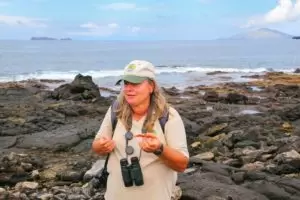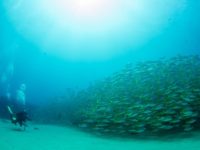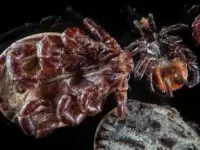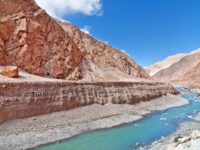
A naturalist is a type of biologist who studies the impacts of living species on each other and the environments in which they live.
What Does a Naturalist Do?
When we think of “naturalist” our first thought will often turn to Charles Darwin's voyages on The Beagle. Latterly, we may think of Steve and Terri Irwin or Sir David Attenborough. Naturalism is one of the oldest sciences but remains relevant today. It differs from biology and biological sciences in that it is far less concerned with genetics and more concerned with relationships. Today, their relationship is far closer to environmental biology. Essentially, it is the study of the natural world as a whole and the study of each species within its environment(s), as well as how species interact with each other. They will look for evolutionary markers to explain why a certain attribute may have been beneficial or what environmental conditions may have led to the rise of genetic diversity within a species. Their understanding is in ecology, natural selection, sexual selection and environmental forcings.
Their work is essential in examining potential genetic links without the use of genetic study. They may work with both botany and zoology samples and compare them to fossils of extinct species in order to determine how far back in the record the species may have split, and how, where and when a certain genetic trait may have risen. Evolutionary science is at the core of their work which is all about observations in the field rather than in the lab. The typical naturalist will spend most of their time in nature rather than in labs taking field notes, photographs and written records and compiling them for analysis.
Where Does a Naturalist Work?
This is part academic study and part applied science with requirements in many areas. According to 2015 data, the largest employer of naturalists and all biological sciences was state government with 33%. They will work for state parks and in areas such as conservation, monitoring and public health. This excludes health and education but may include public outreach and local environmental groups funded or employed by state government. Similarly, the Federal government employed 21% of all biological scientists including naturalists. They will work for Federal bodies including the NPS and EPA.
10% worked for scientific and technical consulting services, often on a contract basis and for government - but not employed by the government, for example as specialists for university support work or for public prosecutions. Their specialist knowledge of how ecological change may affect the biological life that lives there can provide expert testimony.
8% worked in research and development in the physical sciences. Many of our medical treatments come from nature and they may research properties of certain plants, collecting data for genetic analysis (in biotech as well as pharmaceuticals). In this area, they may split their time between working in the field and in labs.
7% worked in education, anything from high schools to technical colleges up to universities as a teacher, research assistant, associate lecturers and professors.
What Is the Average Naturalist Salary?
According to BLS research data released in 2020, the median salary for naturalists, who fall under the broader BLS category of conservation scientists and foresters, was $64,020. The lowest 10% of earners reportedly earned less than $39,230 whereas the highest 10% reported a salary of more than $100,350. The highest paying area was the federal government with a reported median salary of $78,960.*
Naturalist Jobs & Job Description
Naturalists must begin their careers with a strong foundational knowledge of biology, ecology, chemistry, math and geography. For a naturalist at the beginning of his or her career, the job description may include the following:
- Observe plants and animals in their natural habitats, assessing effects of environment and industry on living matter, recording findings in field notes and by taking photographs
- Inventory or estimate plant and wildlife populations
- Organize and conduct experimental studies in natural surroundings
- Collect data and communicate findings by writing reports and scientific papers or journal articles, and by making presentations for schools, clubs, interest groups and park interpretive programs
- Prepare collections of preserved specimens or microscopic slides for scientific study
A more senior naturalist may spend additional time in a lab or office environment, analyzing data collected in the field or designing studies. His or her additional job duties may include:
- Providing analysis of field notes or data collected by junior naturalists
- Make recommendations for preservation or conservation of natural resources and plant and animal life based on the findings of study
- Inform and respond to the public regarding wildlife and conservation issues, such as plant identification and nuisance wildlife
What Is the Job Demand for Naturalists?
Naturalists can expect a job growth of 7% between 2020 and 2030.* Cutbacks are likely and roles may not be filled with following resignations and retirement. The reason for this slowdown is a heavy reliance on government funding at the Federal and the state level. Some of this cutback may be mitigated by private investment and academia, however.
What Are the Education Requirements to Become a Naturalist?
Naturalism is a broad academic area incorporating biology, chemistry, evolutionary science, math and geography. High school students need a good understanding in these areas in order to be accepted onto a relevant degree course. Due to this breadth, there are many degree options open to the aspiring naturalist.
Typical examples include biology and the biological sciences, wildlife management, environmental biology and even forestry may be useful. Any degree that blends the life sciences with geoscience will be a good approach. If the student studies a geography degree, supporting minors and electives should include anything related to biology. Similarly, biology students should ensure they study minors and electives in environmental sciences. Most entry-level roles will expect a master's degree, especially in light of the slowdown of biology and biological science roles in the coming decade. To ensure continued employability, students with the aptitude should consider postgraduate education. Doctorates may be useful for those seeking high-level roles with government bodies, particularly those who may desire a decision-making role, and for those wishing to enter research and academia.
Naturalist - Related Degrees
What Kind Of Societies and Professional Organizations Do Naturalists Have?
Naturalism as a science has been around for several centuries. Therefore, we can expect to see a large and comprehensive network of relevant organizations.
- American Society of Naturalists: For professionals and interested amateurs, this members club advances the knowledge of evolutionary understanding by the study of nature and biological life. They also publish a journal, The American Naturalist
- British Entomological and Natural History Society: Based in the UK, it has members all over the world and focuses on all elements of the natural world with a strong focus on insects
- The Wildlife Society: The magazine for professionals, they bring together everyone interested in wildlife including ecology, biology, evolution and environment
*2020 US Bureau of Labor Statistics salary figures and job growth projections for conservation scientists and foresters reflect national data not school-specific information. Conditions in your area may vary. Data accessed September 2021.





